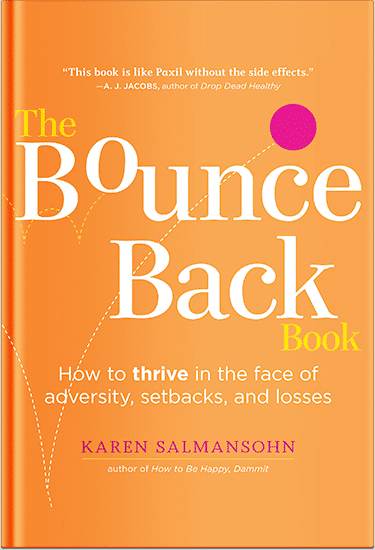 Burnout and emotional fatigue have moved beyond occasional tiredness into long-term exhaustion for many people. Extended stress from work, caregiving, or repeated crises can erode emotional resilience and physical health. Sleep disruption, irritability, and a sense of being cut off from pleasure often follow.
Burnout and emotional fatigue have moved beyond occasional tiredness into long-term exhaustion for many people. Extended stress from work, caregiving, or repeated crises can erode emotional resilience and physical health. Sleep disruption, irritability, and a sense of being cut off from pleasure often follow.
Traditional talk therapy and medications can help, but some individuals still feel stuck. Researchers and clinicians have begun looking at ketamine therapy as another option for people whose symptoms persist despite standard care.
What Ketamine Therapy Involves
Ketamine therapy is a structured medical approach where low doses of ketamine are administered under supervision. The drug has been used for decades as an anesthetic and now appears to influence mood circuits in the brain.
Many clinics offer preparation and integration sessions alongside the medication. These steps are meant to give the process more structure and therapeutic support than casual use, though research on how much they contribute to outcomes is still developing. When guided by trained staff, sessions can create a setting that feels supportive rather than overwhelming.
Why Ketamine is Being Considered for Burnout
Burnout has no single biological marker, but it overlaps with depression, anxiety, and chronic stress. Ketamine acts as an NMDA receptor antagonist, and research suggests this mechanism can increase synaptic activity and plasticity in the brain, which might relate to improved mood and emotional flexibility.
For people feeling mentally ‘stuck,’ the shift in brain signaling can create room to reflect on habits and assumptions. It does not erase stressors but may reduce the emotional load enough to engage with life differently. This is especially relevant for those who have tried multiple approaches without much change.
Evidence and How It Works
Clinical trials have found that ketamine can produce rapid relief in some people with treatment-resistant depression, sometimes within hours or days. Most studies report short-term symptom improvement, though the durability of these effects and their relevance to burnout are still being investigated.
Although the data on burnout alone is limited, studies on related conditions provide clues about its potential. Researchers continue to study dosing schedules, routes of administration, and the role of therapy alongside the medication. Questions remain about long-term outcomes, but short-term improvements are consistently reported.
Modes of Administration
Health care professionals offer several routes of ketamine delivery, each with different profiles. IV ketamine is common in hospital-based programs and allows precise dosing under continuous monitoring.
Oral lozenges and intramuscular injections are other options, though less standardized. Each route affects onset time, intensity of psychoactive effects, and how long benefits last. In every case, medical screening and follow-up help track patient safety and response.
What Happens During Sessions
 A typical course begins with screening for psychiatric disorders, medical history, and current medications. Patients are asked about blood pressure, heart health, and other risk factors to minimize complications. Sessions take place in a medical setting where vital signs can be observed.
A typical course begins with screening for psychiatric disorders, medical history, and current medications. Patients are asked about blood pressure, heart health, and other risk factors to minimize complications. Sessions take place in a medical setting where vital signs can be observed.
Music, eye masks, or a quiet environment may be used to help focus inward. Some people report altered perception, vivid imagery, or emotional release during the infusion therapy process. Integration sessions afterward help translate those experiences into daily life.
Comparing to Other Treatments
Traditional antidepressant medications can take weeks to show effect and may produce unwanted side effects. Ketamine infusions offer a different timeline, often showing changes in depressive symptoms much sooner. Unlike many drugs, ketamine is not taken daily; instead, it is delivered in spaced sessions with ongoing assessment. It can be combined with existing therapy or medication under treatment management by clinicians. People with chronic pain conditions have also been studied for ketamine’s analgesic properties, which adds another dimension to its use.
Safety Considerations
Patient safety is central in any program involving psychoactive substances. Screening identifies contraindications such as uncontrolled high blood pressure or certain heart conditions. During intravenous infusions, staff watch for temporary rises in blood pressure, dizziness, or nausea. The psychoactive effects typically peak during the session and lessen soon afterward, with most people returning to baseline before leaving the clinic, although the timing can vary.
Drug compounding practices and dosing protocols vary among ketamine clinics, so choosing a reputable provider matters. Long-term monitoring helps assess mental status and reduce risks of dependence or misuse.
Conditions Beyond Burnout
Much of the current evidence for ketamine comes from psychiatric conditions such as major depressive disorder and post-traumatic stress disorder. Studies also explore its impact on suicidal ideation and suicidal feelings, where rapid relief can be lifesaving. People experiencing severe depression, bipolar disorder, or other psychiatric illnesses sometimes pursue IV infusion under research protocols. While burnout is not classified as a psychiatric illness, overlapping symptoms of depression make these findings relevant. The medication’s antidepressant effects may provide relief of symptoms even in complex cases.
Practical Realities
Treatment typically involves several appointments spread over weeks. Each visit requires time for the infusion, observation, and sometimes integration therapy. Costs can be significant because most insurance plans do not cover ketamine treatments. Some providers supply documentation that patients can submit for partial reimbursement. Consistent communication with existing therapists or physicians helps maintain continuity of care. Ongoing support after the course is important to sustain gains and monitor for emerging psychiatric conditions or suicidal thinking.
What We Still Need to Learn
Although ketamine shows promise, many questions remain unanswered. Researchers continue to study dosing, maintenance schedules, and which patient groups benefit most. Trials also explore how pairing ketamine with psychotherapy influences outcomes over the long term. Burnout involves social and organizational factors that medication alone cannot fix.
For people considering this option, consultation with health care professionals familiar with psychiatric illnesses and infusion therapy can clarify risks and potential benefits. More data on chronic pain conditions, depressive symptoms, and clinical depression will refine how ketamine is used.
Conclusion
Ketamine therapy offers an emerging approach for individuals experiencing burnout and emotional fatigue who have not improved with standard care. Its ability to act quickly on brain pathways linked to mood makes it distinct from daily antidepressant medications.
Routes such as IV infusion, nasal spray, and other intravenous infusions give clinicians flexibility in treatment management. Patient safety, thorough screening, and integration therapy remain essential for anyone considering this option. While the research base is still growing, the current evidence suggests that ketamine can create space for healing where other methods have stalled.
P.S. Before you zip off to your next Internet pit stop, check out these 2 game changers below - that could dramatically upscale your life.
1. Check Out My Book On Enjoying A Well-Lived Life: It’s called "Your To Die For Life: How to Maximize Joy and Minimize Regret Before Your Time Runs Out." Think of it as your life’s manual to cranking up the volume on joy, meaning, and connection. Learn more here.
2. Life Review Therapy - What if you could get a clear picture of where you are versus where you want to be, and find out exactly why you’re not there yet? That’s what Life Review Therapy is all about.. If you’re serious about transforming your life, let’s talk. Learn more HERE.
Think happier. Think calmer.
Think about subscribing for free weekly tools here.
No SPAM, ever! Read the Privacy Policy for more information.
One last step!
Please go to your inbox and click the confirmation link we just emailed you so you can start to get your free weekly NotSalmon Happiness Tools! Plus, you’ll immediately receive a chunklette of Karen’s bestselling Bounce Back Book!


 Burnout and emotional fatigue have moved beyond occasional tiredness into long-term exhaustion for many people. Extended stress from work, caregiving, or repeated crises can erode emotional resilience and physical health. Sleep disruption, irritability, and a sense of being cut off from pleasure often follow.
Burnout and emotional fatigue have moved beyond occasional tiredness into long-term exhaustion for many people. Extended stress from work, caregiving, or repeated crises can erode emotional resilience and physical health. Sleep disruption, irritability, and a sense of being cut off from pleasure often follow. A typical course begins with screening for psychiatric disorders, medical history, and current medications. Patients are asked about blood pressure, heart health, and other risk factors to minimize complications. Sessions take place in a medical setting where vital signs can be observed.
A typical course begins with screening for psychiatric disorders, medical history, and current medications. Patients are asked about blood pressure, heart health, and other risk factors to minimize complications. Sessions take place in a medical setting where vital signs can be observed.